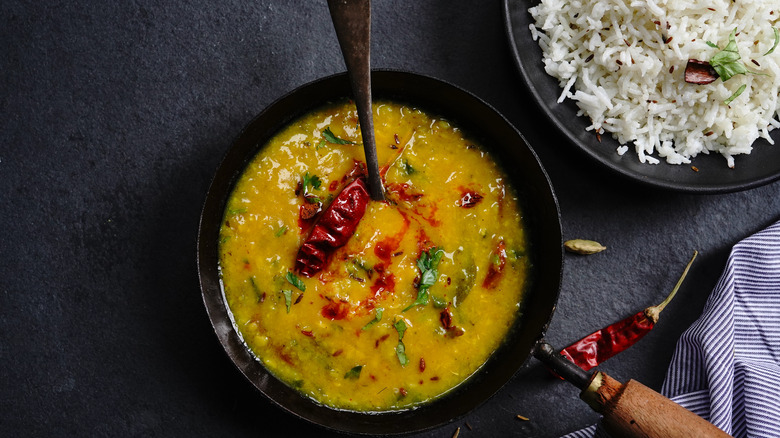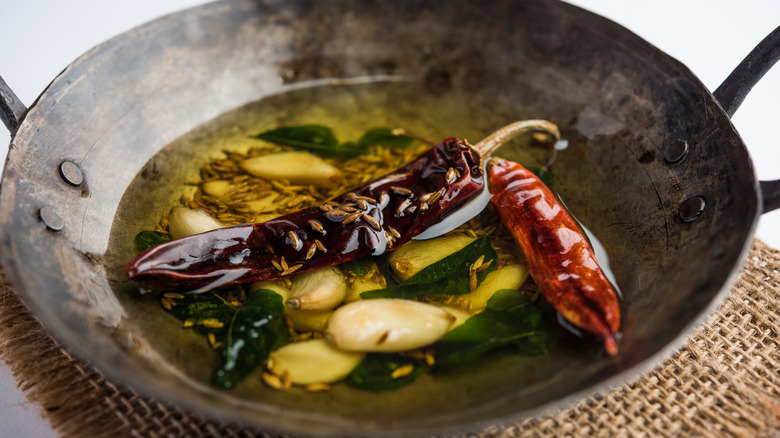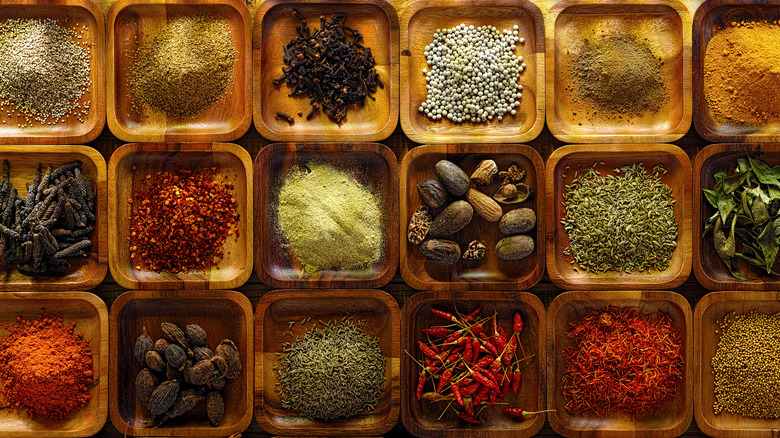Be Sure You Have The Right Pan Handy Before Making Tadka
When following a recipe for dhal or other Indian dishes, you might come across the Hindi word tadka. When used as a noun, it refers to a warm neutral oil or other fat infused with dried spices and aromatics, which brings color and fragrant depth to the dish you add it to. As a verb, it refers to the specific technique for making such an infusion. An essential part of that technique has to do with the pot you use.
If you've ever dropped something — or even laid it down gently — into a pot of sizzling fat, you're all too familiar with the dreaded splatter effect that can occur. When making tadka, the crushed spices, seeds, and other lightweight ingredients can jump from the hot pan and leave a mess, if not pocket-sized burns on your skin. Opt for a high-walled saucepan with a lid or a traditional tadka pan to keep your herbs and spices in check. Whatever you do, try to steer clear of skillets.
Splatter control
When there's a pan made specifically for a particular dish, you might as well use it. Tadka pans are small and bowl-shaped with a handle similar to a saucepan, which is handy when high temperatures and sputtering seeds are involved. The one thing that doesn't typically come with a tadka pan is a lid or splatter guard, which you might need when seeds start showing signs of popping.
While it's not as traditional, a high-walled saucepan with a lid might be the best choice for those who have never made tadka and are nervous about cooking with hot fat. The last thing you want to use is a skillet, whose low walls will present the highest risk of potentially dangerous splatters.
On Reddit, one seasoned tadka maker suggests saturating the seeds and spices in fat, explaining, "Even if they pop, they need to get past a certain height of fat to jump at your face."
The user warns against heating the fat over high heat, opting to warm it low and slow over medium heat before tossing in the aromatics. Another user waits for the fat to smoke, adding the spices off the heat.
Mustard seeds are worth the pop
The tadka ingredient most likely to pop and sputter is mustard seeds. When the seeds hit the hot oil or ghee, their moisture evaporates quickly, creating pressure that causes them to jump from the pot like popcorn. However, as much trouble as they might cause during the cooking process, their distinctive flavor and aroma in the completed dish make them well worth the effort.
While there are many different types of tadka, a few ingredients frequently appear. Besides mustard seeds, other common tadka spices include cumin, coriander, fenugreek, fennel, cinnamon sticks, and fresh or ground turmeric. You might also find curry and bay leaves, along with legumes like lentils or split peas, which add a satisfying texture and nuttiness, especially in contrast with the soft, silky dishes tadka is often paired with. Meanwhile, additional flavorings like alliums, fresh chilis, and fresh ginger are also par for the (delicious) course.


